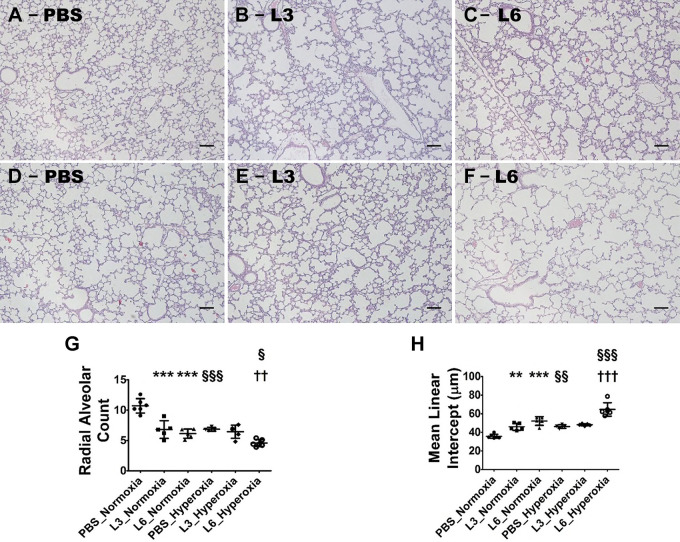Fig. 3.
Alveolarization deficits in 2-wk-old C57BL/6J wild-type mice exposed to LPS and hyperoxia during the saccular phase of lung development. C57BL/6J wild-type mice were exposed to either 21% O2 (normoxia) or 70% O2 (hyperoxia) during postnatal days (PNDs) 1–5 and injected intraperitoneally with 3 (L3) or 6 (L6) mg/kg of LPS or the vehicle (PBS) on PNDs 3–5. The mice were euthanized on PND 14 for lung morphometry. A–F: representative hematoxylin-and-eosin-stained lung sections from mice treated with PBS (A and D), L3 (B and E), or L6 (C and F) and exposed to normoxia (A–C) or hyperoxia (D–F). Scale bar = 100 µm. G and H: alveolarization was quantified by determining RAC (G) and MLI (H). Values are expressed as means ± SD (n = 4–6 mice/group). Significant differences between PBS- and LPS-treated mice are indicated by **P < 0.01 and ***P < 0.001 under normoxic conditions and by ††P < 0.01 and †††P < 0.001 under hyperoxic conditions. Significant differences between treatment-matched mice under normoxic and hyperoxic conditions are indicated by §P < 0.05, §§P < 0.01, and §§§P < 0.001.

